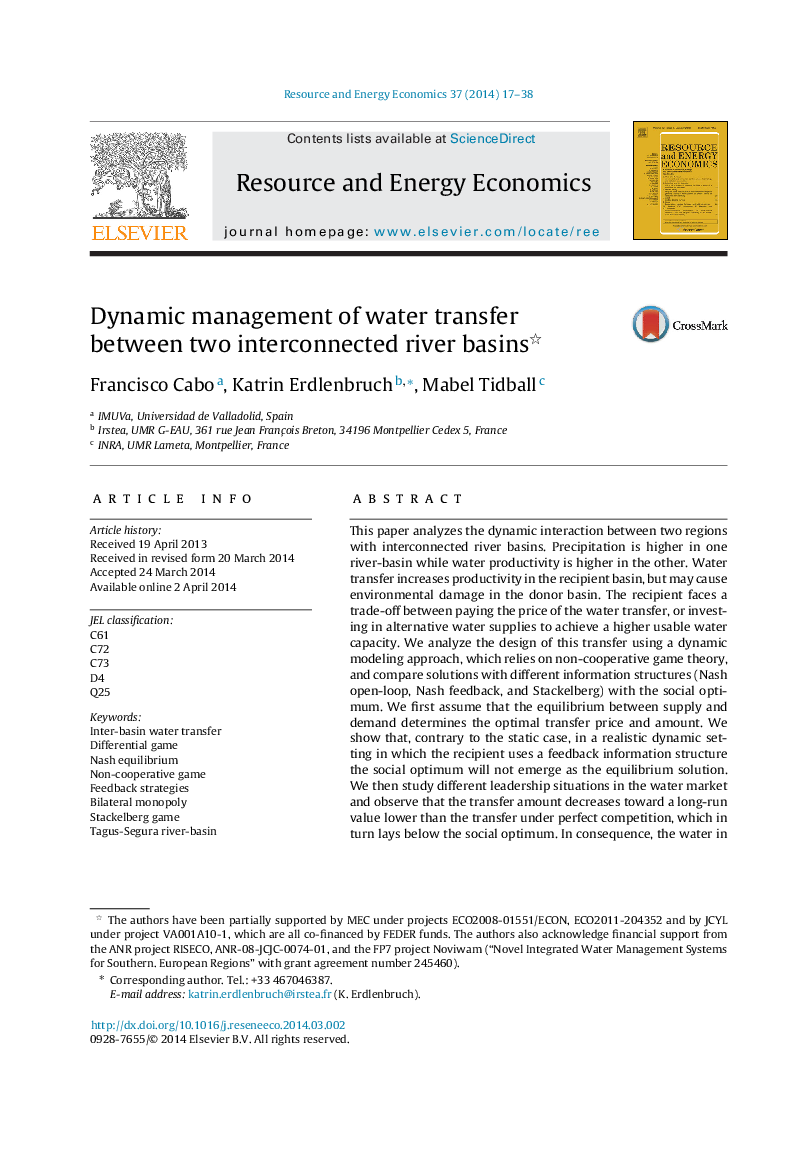| Article ID | Journal | Published Year | Pages | File Type |
|---|---|---|---|---|
| 985641 | Resource and Energy Economics | 2014 | 22 Pages |
•Non-cooperative dynamic game of water transfer between two asymmetric river-basins.•We extend an existing static analysis with an illustration from Tagus-Segura basin.•The transfer and its price are the same functions with or without commitment.•Nash and Stackelberg solutions are analized and compared to the social optimum.•In the static case, non-cooperation is Pareto efficient, not in dynamic case.
This paper analyzes the dynamic interaction between two regions with interconnected river basins. Precipitation is higher in one river-basin while water productivity is higher in the other. Water transfer increases productivity in the recipient basin, but may cause environmental damage in the donor basin. The recipient faces a trade-off between paying the price of the water transfer, or investing in alternative water supplies to achieve a higher usable water capacity. We analyze the design of this transfer using a dynamic modeling approach, which relies on non-cooperative game theory, and compare solutions with different information structures (Nash open-loop, Nash feedback, and Stackelberg) with the social optimum. We first assume that the equilibrium between supply and demand determines the optimal transfer price and amount. We show that, contrary to the static case, in a realistic dynamic setting in which the recipient uses a feedback information structure the social optimum will not emerge as the equilibrium solution. We then study different leadership situations in the water market and observe that the transfer amount decreases toward a long-run value lower than the transfer under perfect competition, which in turn lays below the social optimum. In consequence, the water in the donor's river-basin river converges to a better quality in the presence of market power. Finally, we numerically compare our results to the Tagus-Segura water transfer described in Ballestero (2004). Welfare gains are compared for the different scenarios. We show that in all dynamic settings, the long-run transfer amount is lower than in Ballestero's static model. Further, we show that the long-run price settles at a lower level than in Ballestero's model, but is still higher than the average cost-based price determined by the Spanish government.
